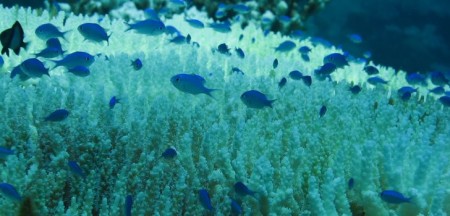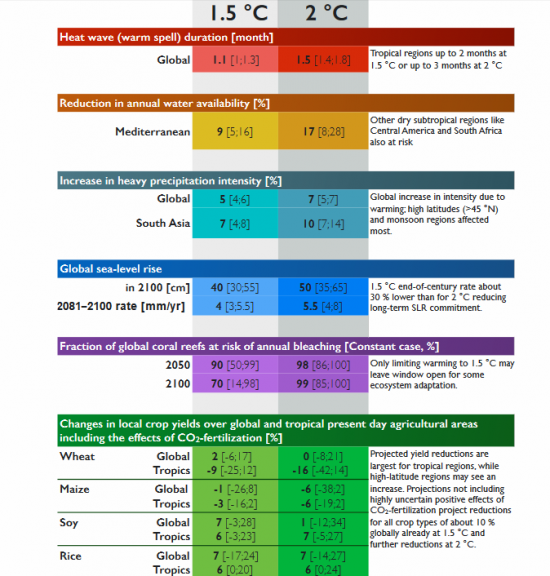April 30, 2016 – A little over a week ago I wrote a piece entitled, Why 1.5 is a Better Number Than 2.0. At the time I had not yet seen the latest research appearing in a new research paper published in the journal Earth System Dynamics which studied 11 different indicators including extreme weather events, freshwater availability, crop yields, coral reef degradation and sea-level rise. A read through this paper is an eye opener on how one-half a degree Celsius mean temperature rise makes such a significant difference.
Here are a few of the observations made by the authors of the paper:
- A 2.0 degree rise compared to 1.5 degrees means sea levels will be more than 10 centimeters (4 inches) higher than with the lower temperature, with increased salt water intrusion into coastal aquifers and wetlands.
- At 2.0 degrees versus 1.5, almost every coral reef on the planet would be at high risk compared to 70% at the lower number.
- Central America and the Caribbean, Southern Africa and Australia will see fresh water scarcity increase by 10% at 1.5 and 20% at 2.0.
- The half-degree difference means extreme heat increases of 3.0 versus 2.0 Celsius in most of the Northern Hemisphere, Central and South America and Southern Africa.
- Warm spells in tropical regions will last 50% longer in a 2.0 degree versus a 1.5 degree world.
- Crop yields for the world’s most important staples – corn (maize), wheat, soybeans and rice, will be impacted.
The end date for all these predictions is the year 2100.
The table that appears below appears in the study. It is a good summary. Note not all temperature changes between 1.5 and 2.0 produce negative results. In some cases, staple crop yields are predicted to rise in higher latitude zones yielding gains in agricultural productivity. But in the tropics the half a degree difference will be critical producing negative impacts that will imperil human populations and biodiversity.
In its conclusions the study describes “that difference in climate impacts between 1.5 Celsius and 2 Celsius are most pronounced for particularly vulnerable regions and societal groupings with limited adaptive capacity.” They further project “a fundamental challenge for regional food security” and “new poverty traps for several countries or populations within countries.” North Africa and the Middle East are singled out as a“hot spot” for water availability “potentially increasing the risk of violent conflict outbreak.” Wars about religion may be replaced by wars over water and food.
That one-half degree will not be the difference between Eden and Hell. But if we humans can keep the mean temperature rise to no more than 1.5 Celsius by 2100 the outcome will be far better than a world 2 degrees warmer. Credit the Pacific and Indian Ocean island nations for pointing out the difference and showing most of the world’s leaders how wrongheaded the original 2 degree target is proving to be.
Want to learn more. Access the original research through the link provided here.










